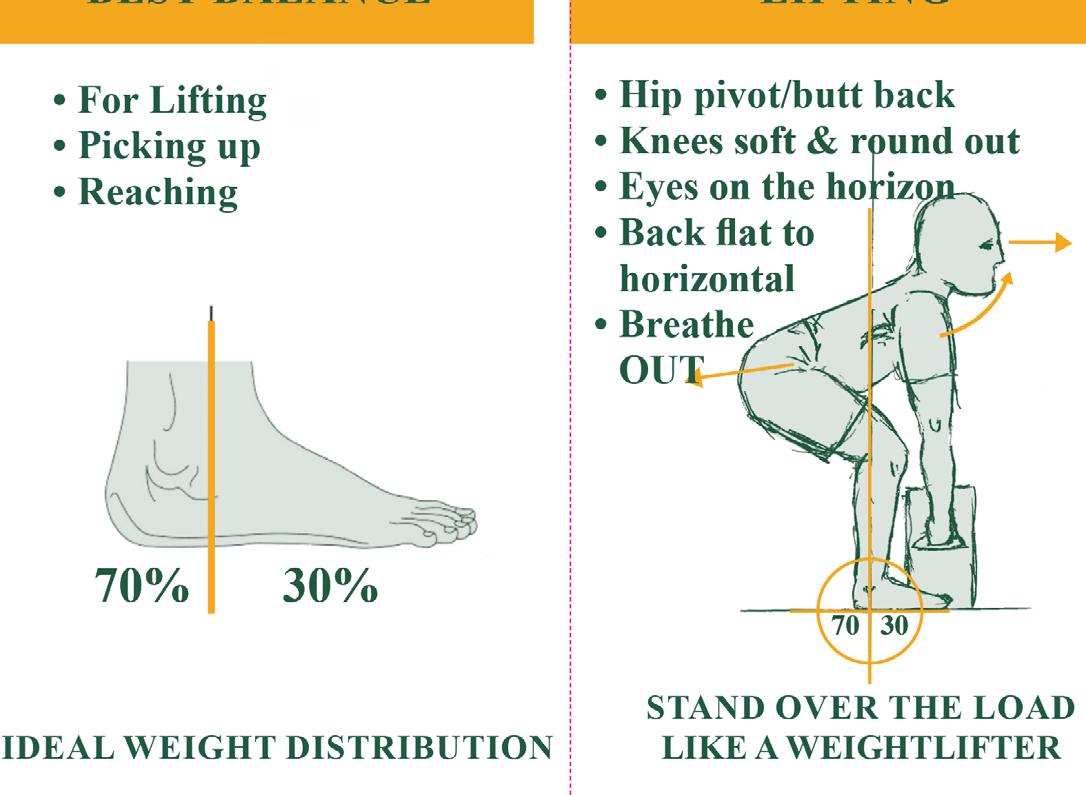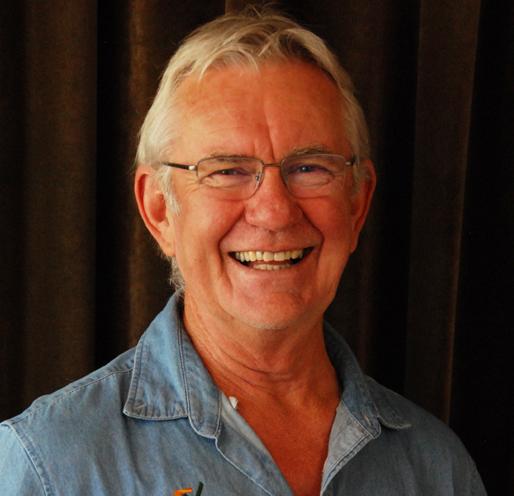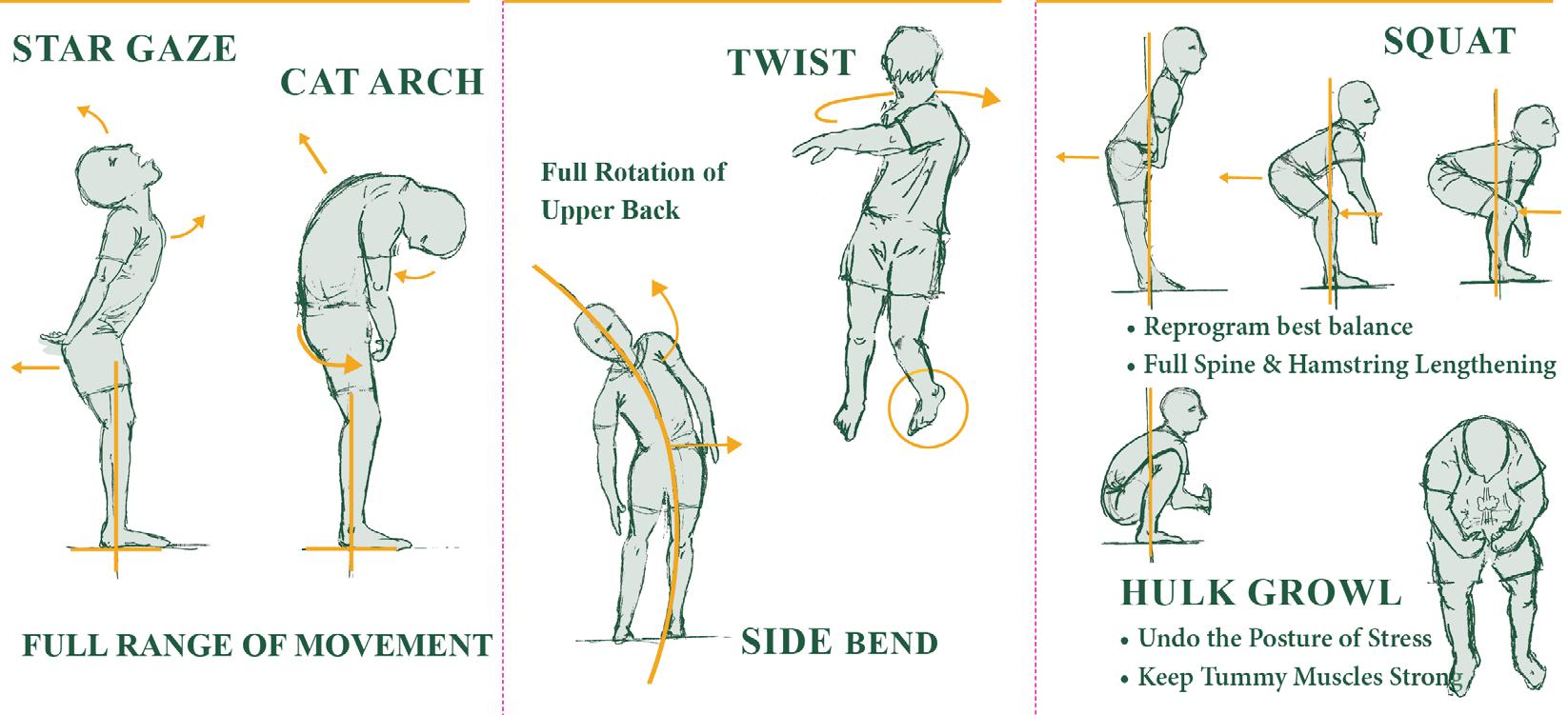
5 minute read
The great unlearning
Safety News and AsiaPacific Infrastucture publisher Mike Bishara accepts an invitation from Optimum Training to join a four-hour safety training session
Iharboured a fervent hope that 25 years of development and refinement of Wayne Milicich’s injury prevention model might contain a few surprises.
Advertisement

The prospect of four hours in what I suspected could be a moralising lecture about how to lift a box was not enthralling. I could see, as we shuffled into the training centre, that the rest of the class felt the same, with a range of resigned, bored and cynical faces.
We were wrong. Boy, were we wrong. Participants soon learned “it was all about them” and their individual quality of life. And how 30 seconds after the training would break the harmful muscle memory that had taken over the way we did things.
“The programme is about unlearning what we learned between the ages of about eight to 13 years old and restoring all the movement patterns that we learned naturally during the first five to eight years of our life,” says Milicich.
For example, children all demonstrate best balance, unlike most adults. About 80 percent of the adult population “half breathe” from the apical area of the lungs as opposed to the diaphragm and lower lobes of the lungs, according to Milicich. “Children all naturally breathe from their belly, diaphragm, unless they are stressed.”
The most hardened cynics in our group quickly became engaged in the programme through a series of practical truths, illustrated by a range of interactions, sometimes with a workmate.
We emerged half a working day later wondering who to sue for the preventable harm I have inflicted by following instructions. Life quality did not require lifetime dedication, just a reordering of basic instincts and tossing out a few myths. For our group, the quality of life had become anchored forever around balance and the 70/30 weight split between heels and toes.
We were converts to breathing out like weightlifters, sticking out our butts and letting tummies and abdominals do their thing - we discarded posture misinformation and stress and replaced it with comfort, a safe and secure back and no pain.
Optimum’s programme is of suggested solutions, not imperatives. “When we do this training, it is to benefit the individual. The company clips the ticket and gets a benefit only when the individual benefits.”
“You cannot stand on a platform and tell people they are wrong. When a person’s belief is challenged, they will do anything to defend that truth as it is what they believe and know and have lived by. The only way to expose the false belief is to lead someone to find the truth for themselves.
In most cases following instilled poor habits is akin to tapping yourself lightly on the head with a hammer for years. Do it enough times and you will end up permanently damaged.
You cannot separate work safety and whanau safety – they are two sides of the same coin, according to Milicich. Health and safety at home and work are just a component of our life quality. Not something that is separated out with its own rules to be applied at specific times and locations.
To a person, we emerged ready to retrain our misguided muscle memory with the 30-secondsa-day-worth of drills to reprogramme our muscle memory that had taken us just four hours to master.
“The training empowers people to work out the truth for themselves and trust themselves. You are the only person who can determine what works best for you. Trust yourself to make a good call,” says Milicich. With no pen, paper or tables in the room, this programme is “pure adult facilitation of kinesthetic learning followed by cognitive understanding. It is simple to restore what was once in the muscle memory when we were five to eight years old. The original neural pathways just open up again,” he says. We learned and now retain what we learned.
“Stress is recognized as a major cause of MSD and auto-immune disease. We help people understand how their body manifests stress and equip them with the understanding and tools to manage themselves during stressful times,” says Milicich.
Optimum’s facilitation process has four specific steps. When applied correctly to the session, most often the learner has no idea of what has happened, but they do recognise that their life has changed for the better.
Our session began with participation exercises which showed the overriding importance of balance.
The 70/30 rationale was enough to consign to the bin, along with a flurry of other medical myths, the long-held and totally wrong “bend your knees and keep your back straight” doctrine.
It soon became apparent why Optimum’s quality of life programme is used by many of the country’s most astute corporations in an age where time “off the floor” is critical to the bottom line and many companies look only to tick the boxes of compliance.
The benefits are equally cost effective, available and absorbed by SMEs. My class had only nine other participants so having a cast of thousands is not essential – or even recommended.
“Move Smart Think Smart is about addressing the underlying causes of muscle and joint pain that occur as we interact with inert objects both at work and at home. Home injuries affect the workplace. Workplace injuries affect the home and family,” says Milicich.
“Either way the quality of life of a person is compromised. The traditional medical model calls the problem ‘nonspecific back pain and occupational overuse’. In fact, the pain is about inadvertent personal misuse of the body -- it is very specific.”
The bio-medical model reckons back pain is normal. “No, it is not normal,” says Milicich. “It is common, and the medical model is unwittingly part of the problem.

“Good posture” is nothing more than an old wives’ tale based on the military model of control and it is still believed today. A teacher tells children to sit up straight as a means of controlling the class. It is now portrayed as good posture.
“The medical field is littered with information and advice that was eventually proven wrong and retracted. Some of our western cultural beliefs are based in nothing more than decades or centuries old beliefs and mores.
The sad thing is that more than 80 percent of MSD's are inadvertently and unwittingly self-inflicted. People hurt themselves as they interact with inert objects, and they don't even realise it, says Milicich.
“The only way a box can hurt someone is if it is flying through the air and strikes them. Or if it is moving on a conveyor and they put their hand where they should not.
A spade and the ground are both inert. To suffer pain while digging a hole is the person hurting themselves as they interact with the spade and ground.
The pain is a direct result of poor skills and technique of movement -- self-inflicted pain.

Most people blame something or someone for this self-inflicted injury. At that point, only the symptom can be addressed with drugs and therapy.
The problem returns as they repeat their old thinking and poor technique once the symptom has eased.
“No one deliberately hurts themselves. Given the opportunity, everyone makes the right choice,” says Milicich.
To a person, everyone was engaged for the full duration of training, always relevant, interesting, practical and beneficial to each person. We felt equipped and empowered to take back responsibility for ourselves. I personally still muse over and apply the learnings. My years of knee pain has gone.






